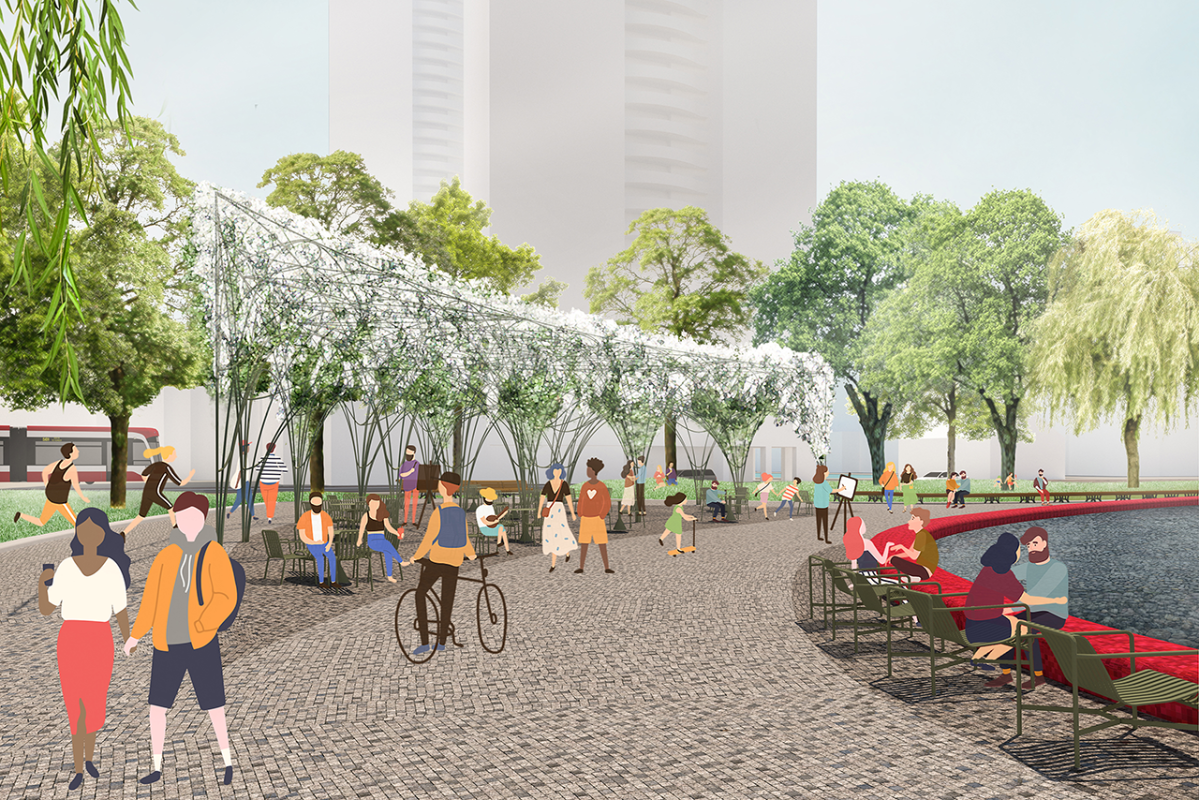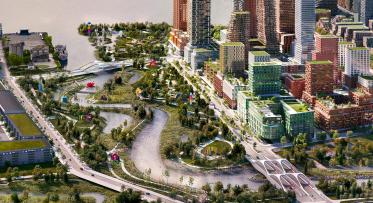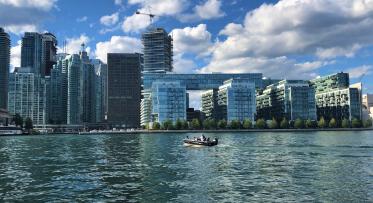A Green Gateway to the Waterfront
Love Park is designed as a ”bosque,” of trees opening to a central heart shaped pond. Rolling elevated grassy mounds provide further buffer from nearby roadways and offer space to relax and enjoy the park at different vantage points.
POSTED: MARCH 4, 2021
BY: KATIE ANDRACHUK
Love Park is designed as a “bosque,” which is a planting of trees opening to a central heart shaped pond. This park will be a deliberate departure from the hard surfaces dominating downtown Toronto. Tree-lined sidewalks will outline the pathways in and around the park site, marking the shift to a calm city refuge. Rolling elevated grassy mounds provide further buffer from nearby roadways and offer space to relax and enjoy the park at different vantage points.
The park has been designed to optimize the health of trees on site and ensure it will be filled with a wide variety of trees and high tree canopies well into the future. Love Park’s design doesn’t need to negotiate underground parking structures or slabs—something that is completely unusual in a city centre. As a result, the design takes advantage of the underground planting space in order to prioritize the needs of the 38 new and 4 preserved trees by providing ample spacing for each. With proposed tree species spaced 12m apart, and soil volumes for each in excess of 30m3 each, new plantings are able to grow big and strong to establish a new green gateway to the waterfront.
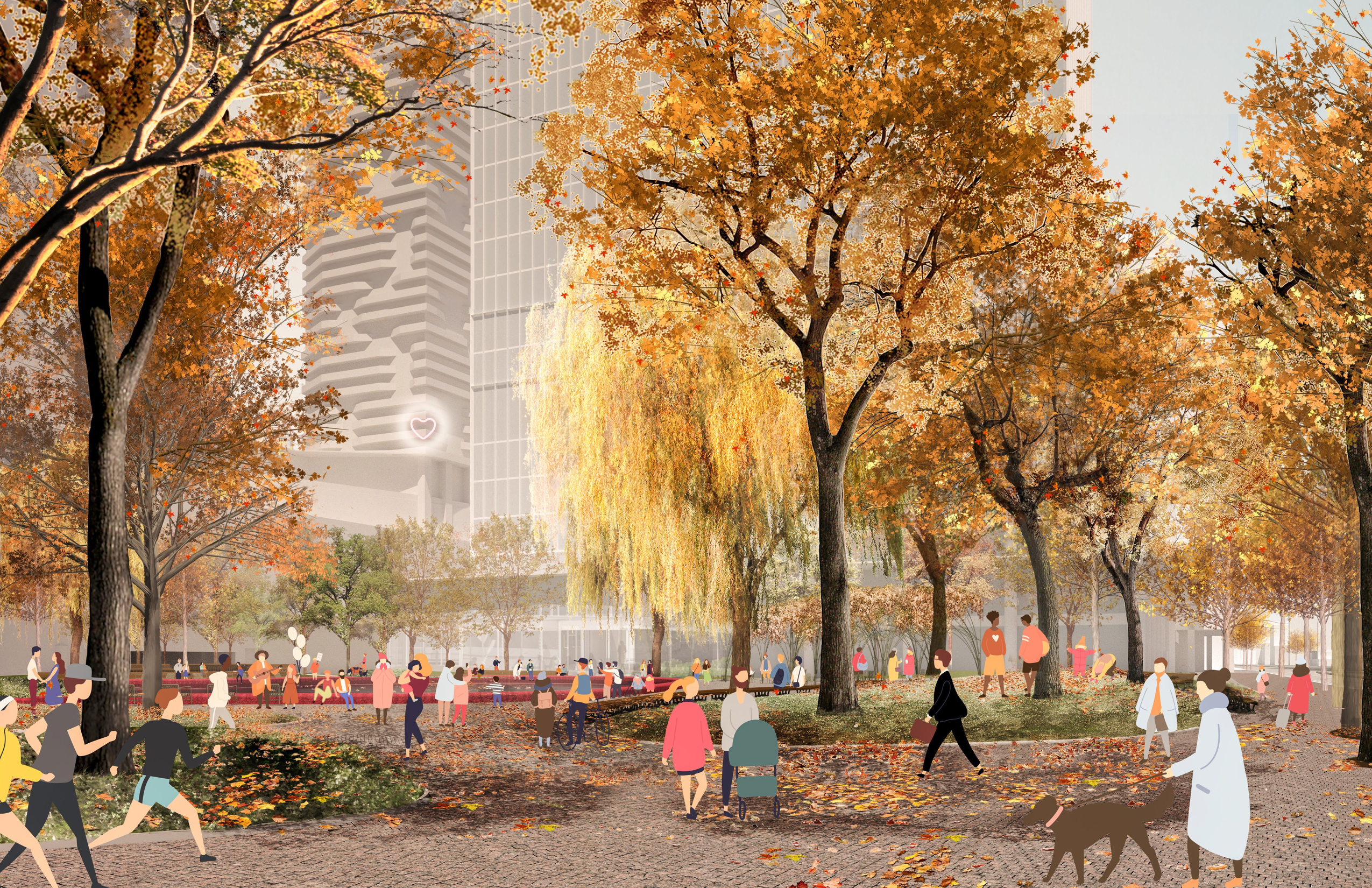 The park has been designed to optimize the health of trees on site and ensure it will be filled with a wide variety of trees and high tree canopies well into the future.
The park has been designed to optimize the health of trees on site and ensure it will be filled with a wide variety of trees and high tree canopies well into the future.
But making things grow is not that easy, and not that obvious. To ensure maximum growth and longevity, the new trees and their system have been designed in accordance with the following six fundamentals towards successful trees, as researched and published by renowned tree expert James Urban:
- Prioritize design detailing for sufficient soil volumes to promote large trees.
- Provide enough room for expanding trunk areas.
- Build-in provisions for water in filtration and distribution through the soil.
- Include sub-drainage to prevent saturation of soil and roots.
- Space trees apart as needed to promote a wide spreading branch canopy
- Be diligent and discerning in selecting quality nursery stock.
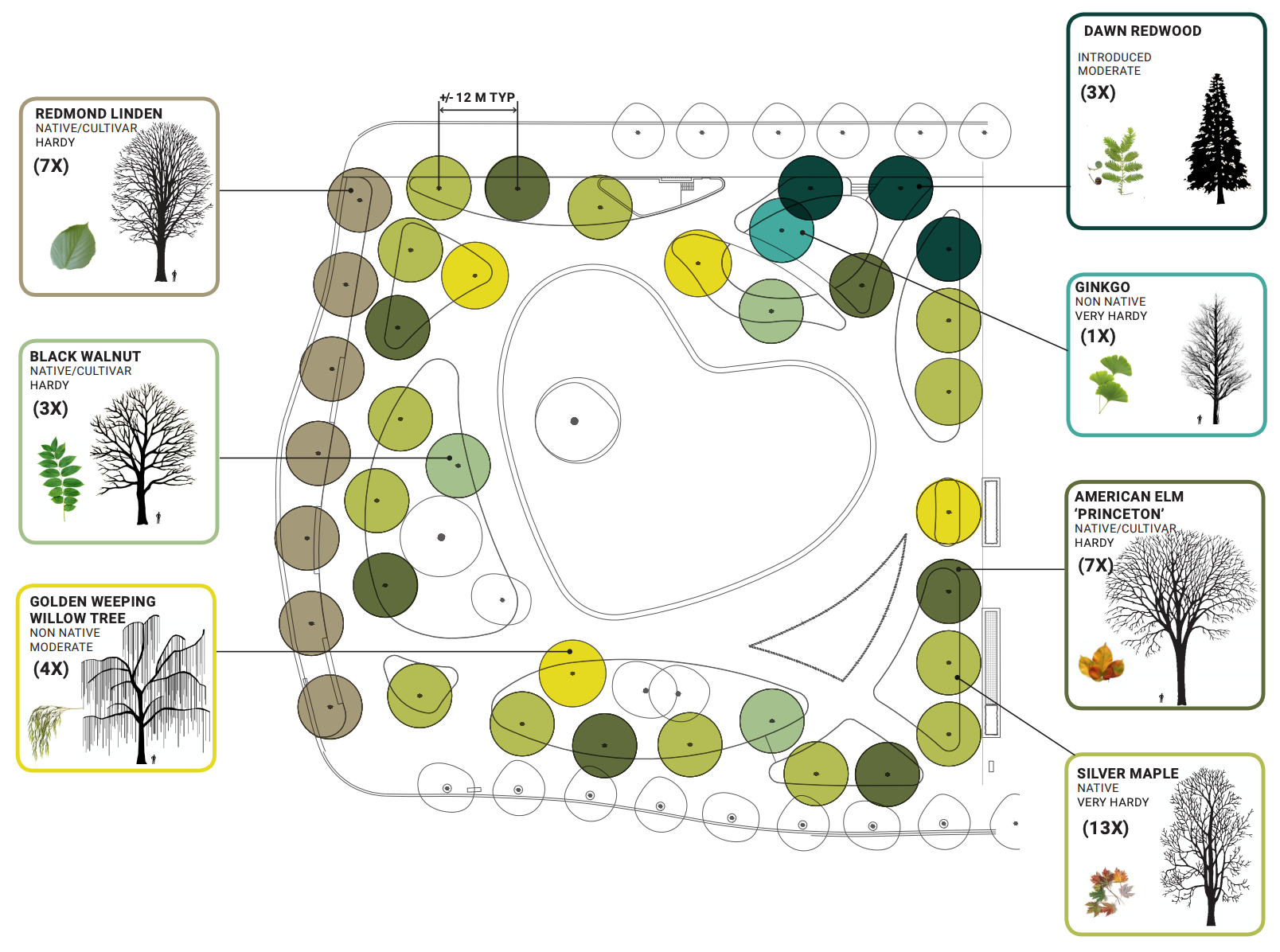 This map shows the various tree species being added to Love Park.
This map shows the various tree species being added to Love Park.
Among the types of new tree species being added to the park, we will have a row of Redmond Linden lining the edge of York Street. These trees will match the Linden’s on the west side of York Street and will be planted in raised beds along the north-south path. As their canopies begin to expand, it will give the effect of having a vaulted canopy of leaves above York Street and adjacent walkway. Weeping willows will help to create a relaxed and billowing movement throughout the park. Next to the new dog off-leash area, we have both Dawn Redwoods and a Gingko biloba tree—a tree that is necessarily tolerant to urban conditions. American Elms and Silver Maple will also help to round out the overall canopy in the park.
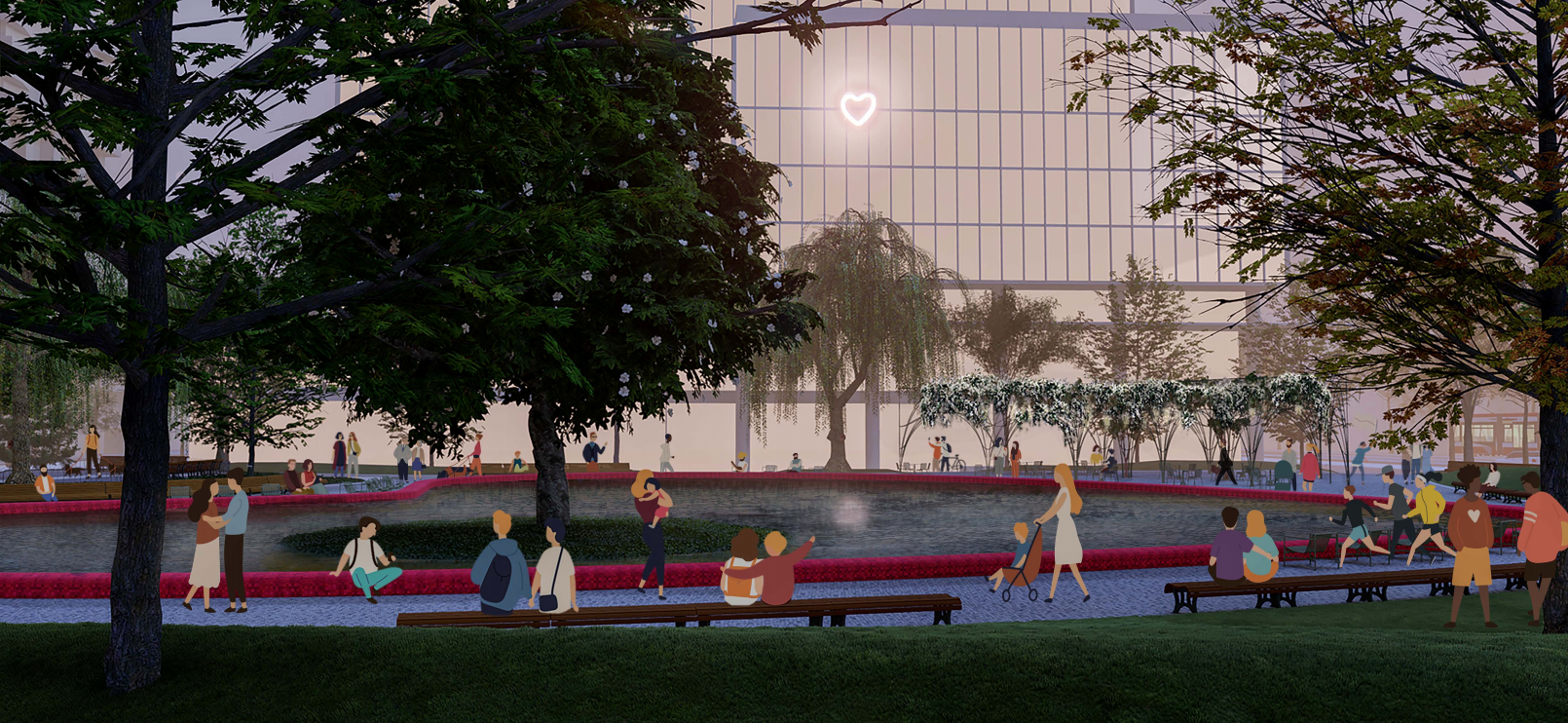 As the trees begin to grow, their canopies will expand and give the effect of having a vaulted archway of leaves above York Street and adjacent walkway.
As the trees begin to grow, their canopies will expand and give the effect of having a vaulted archway of leaves above York Street and adjacent walkway.
The ground cover in the park allows for active use by visitors while also providing a lush backdrop for those inside the park. A low-grow fragrant sumach, a native species, will grow to about one foot high and give the appearance of a green fluffy carpet. This kind of sumach is also very salt tolerant, which is important particularly in this area of the city (i.e. adjacent to the Gardiner Expressway). Euonymus Coloratus and Emerald Gaiety Euonymus will be on the internal paths of the park and will help create the appearance of a continuous soft green carpet throughout. To give an added feeling of romance, the park will be sprinkled with ‘Annabelle’ Hydrangea, climbing Hydrangea, and white Wisteria.
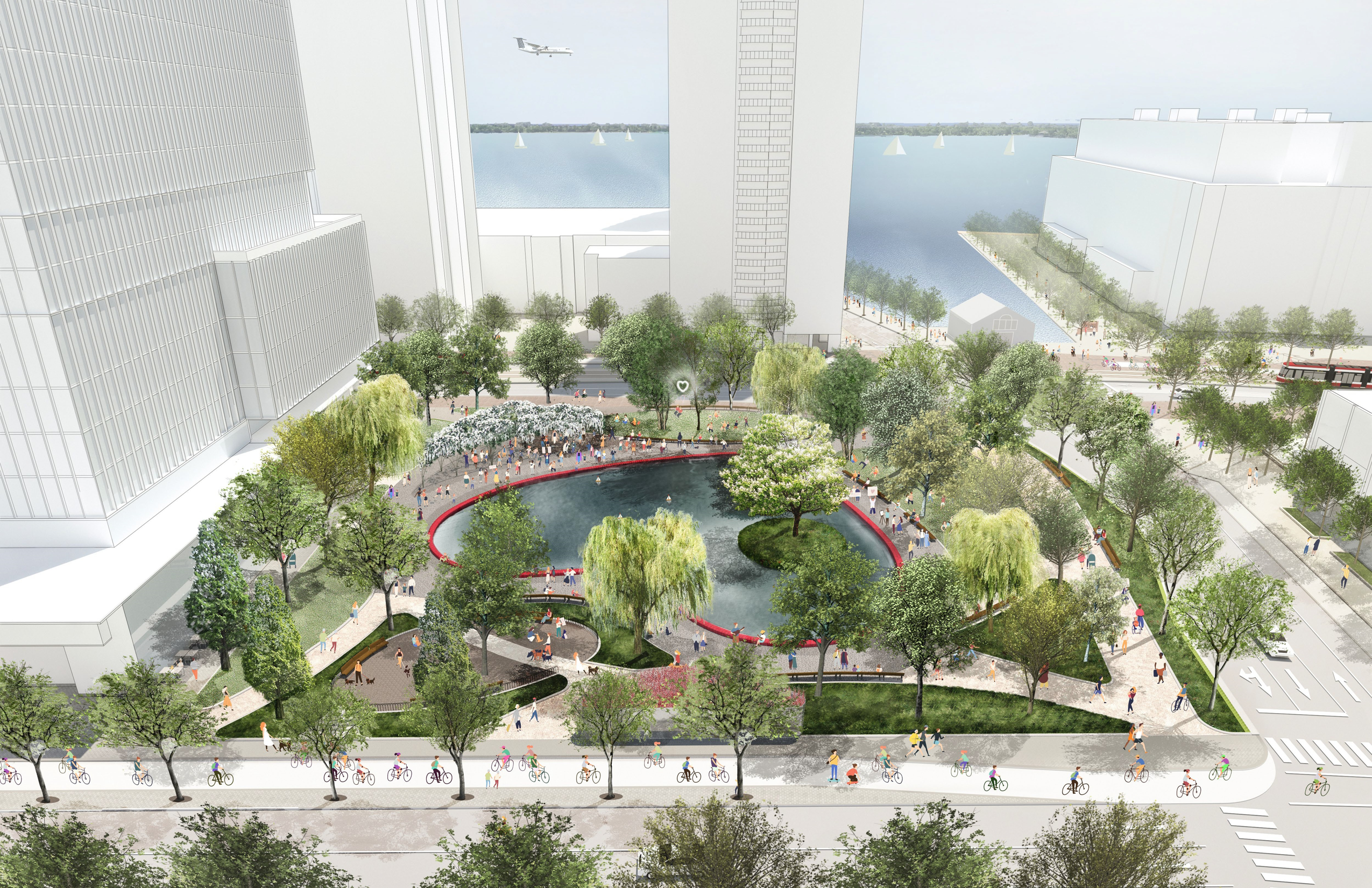 In the daytime, adjacent buildings will have a unique aerial view of the park’s heart shaped pond, which is aligned to “true north."
In the daytime, adjacent buildings will have a unique aerial view of the park’s heart shaped pond, which is aligned to “true north."
Since the international design competition, the park's overall design, including the ambitious planting strategy, has been presented for comment on multiple occasions to both Waterfront Toronto's York Street Park Stakeholder Advisory Committee (SAC), members of the public (January 13-17, 2020), and to Waterfront Toronto's Design Review Panel (July 24, 2019 / December 11, 2019).
Ensuring Health of Existing Trees
Waterfront Toronto had arborists conduct assessments of the existing trees on site on multiple occasions—before the design competition for the park in 2017 and again in 2020 in preparation for construction in 2021. This assessment is a necessary step in the construction process that helps us to create an up-to-date strategy for ensuring the long-term health of the existing and new tree plantings.
In the fall of 2020, Waterfront Toronto had arborists undertake important maintenance of the trees on site to ensure the health and longevity of these remaining trees before, during and after construction. This work included:
- Dead Wooding: common and important part of maintaining tree health that helps prevent the spread of rot throughout the tree.
- Branch Bracing: affixed to some trees to help create a stronger branch structure by absorbing shock and stretch of branches over time. The cables will remain in place permanently. They are non-abrasive and extend the life of mature trees.
- Air Spading & Root Pruning: Air spading is a safer, less invasive way for arborists to maintain root health than manual digging and avoids damaging the root system. Pruning is done in advance of construction on the site to minimize the risk of doing damage to important root systems during construction. Root pruning helps to encourage growth of new feeder roots.
Want more info?
Read this blog for a full view of what’s planned for this beautiful new public space in the heart of our Central waterfront.
Editor’s note: This blog was updated on January 13, 2023 to correct the number of new and preserved trees.

